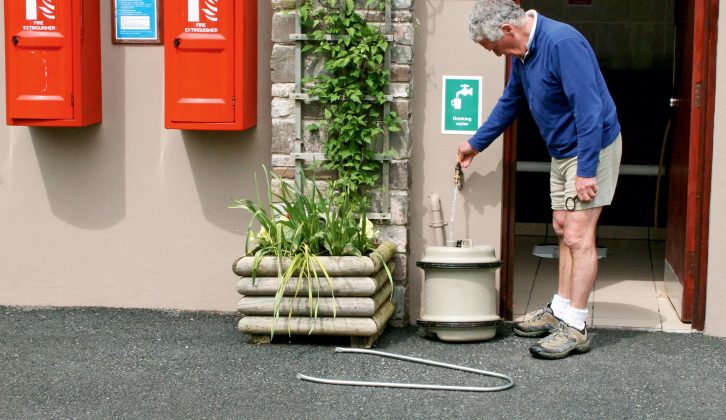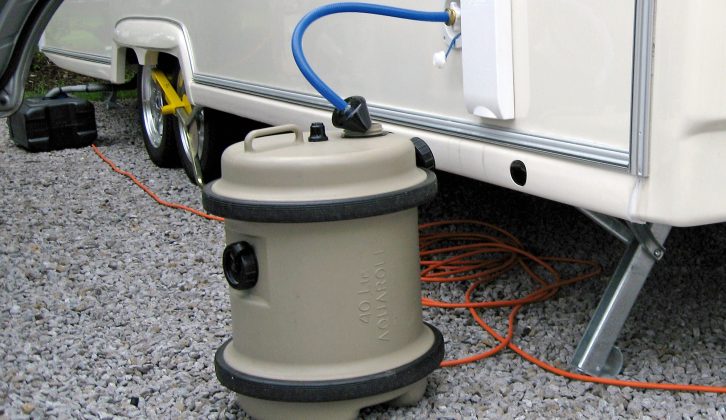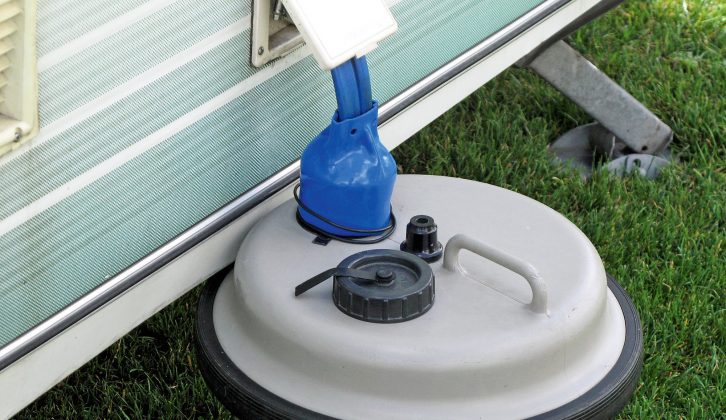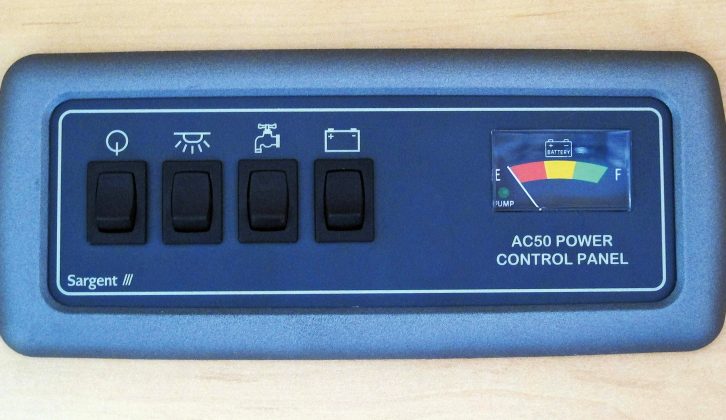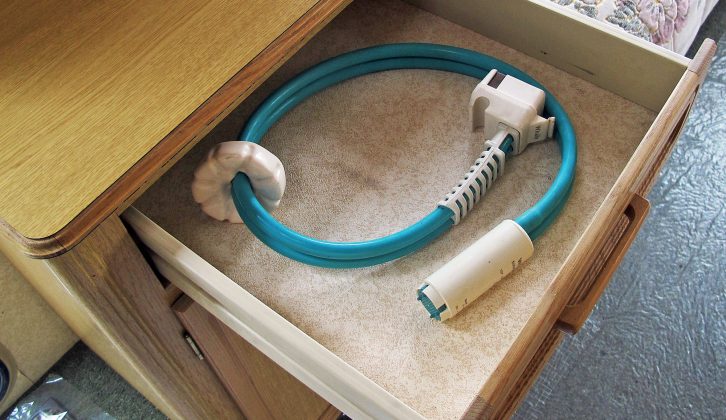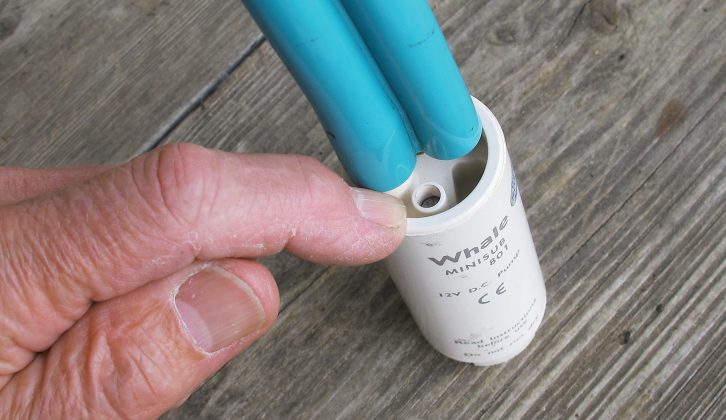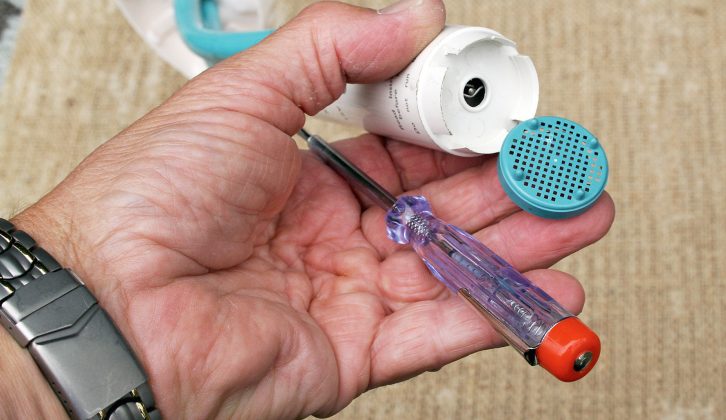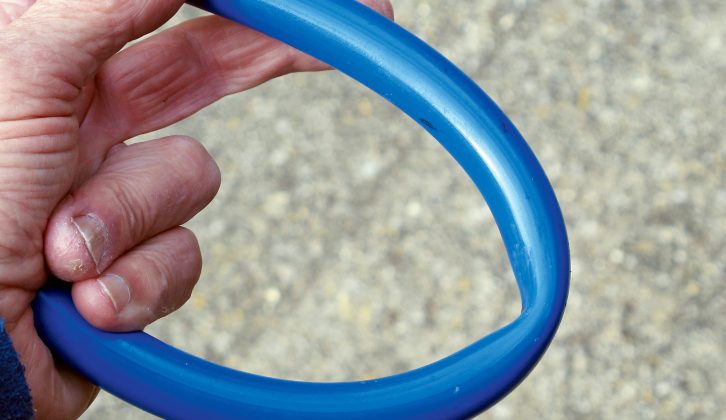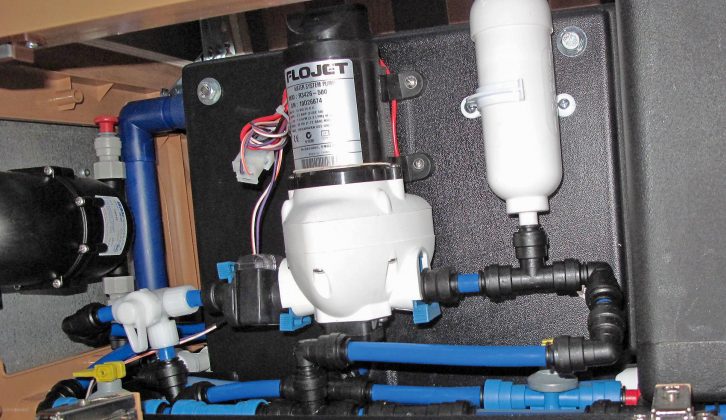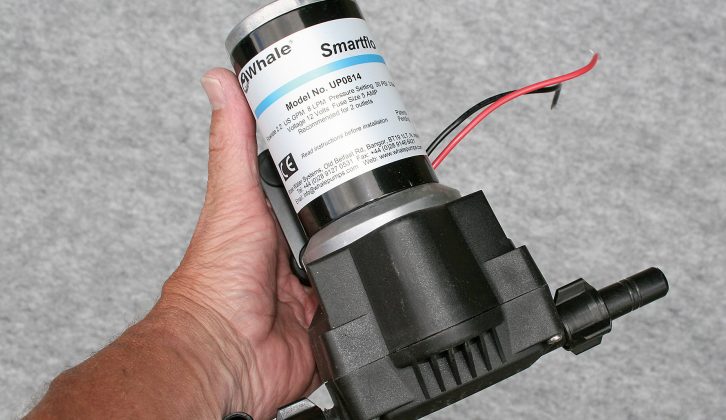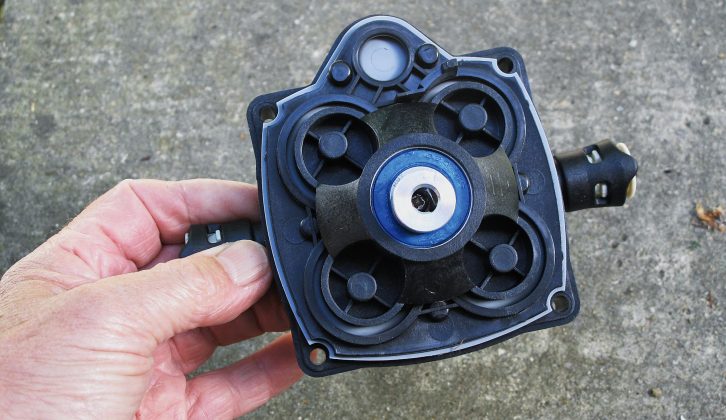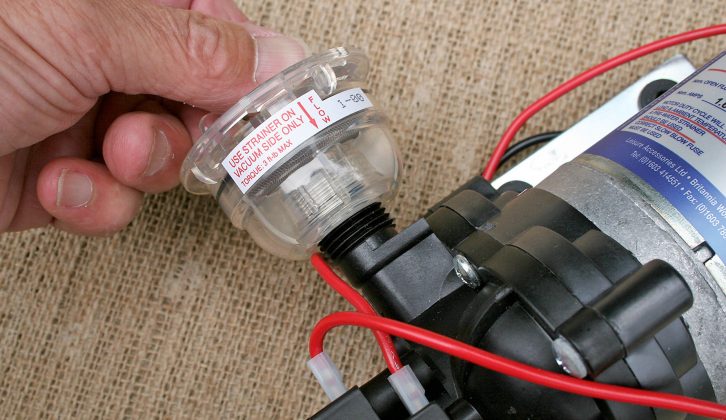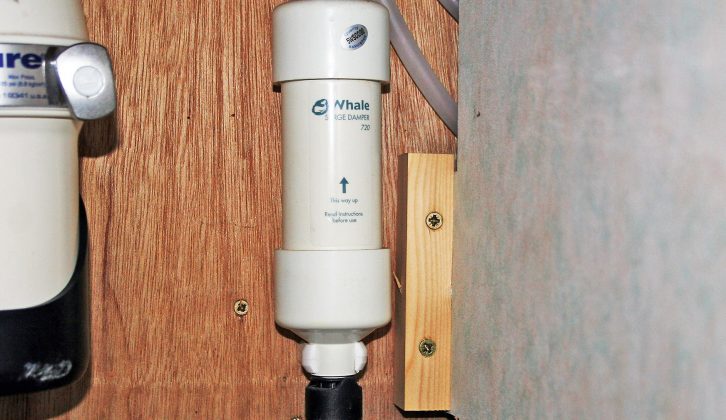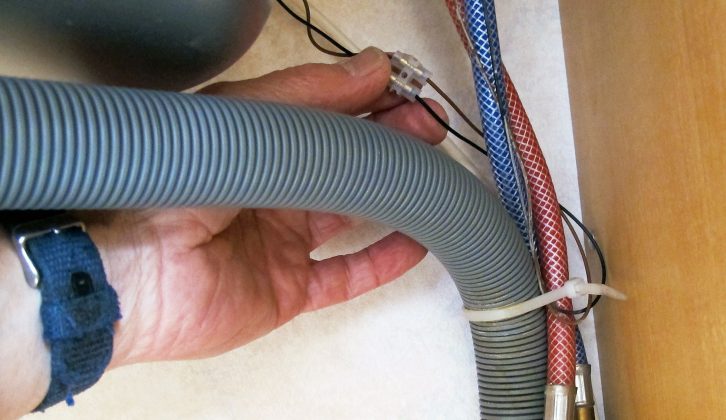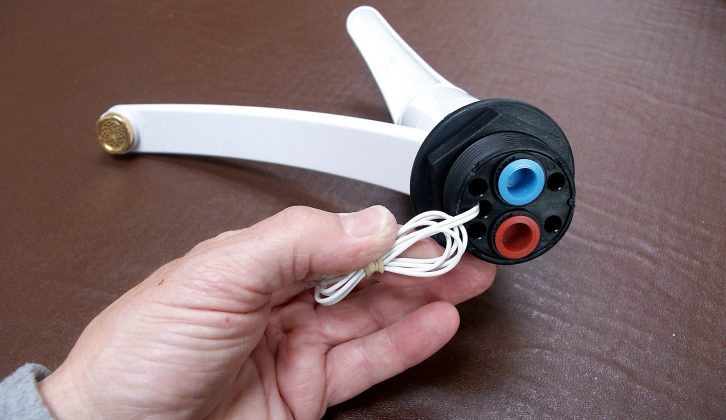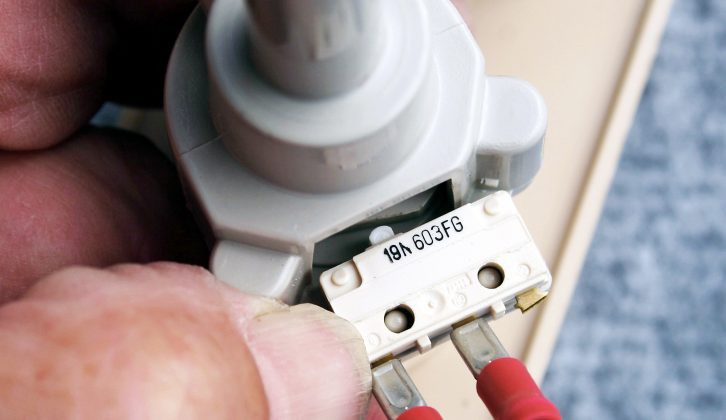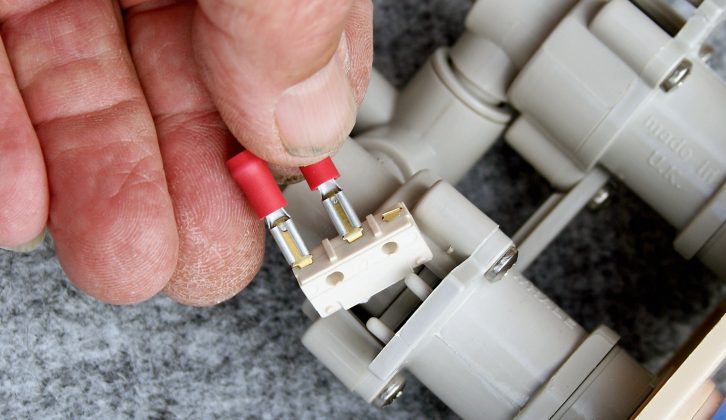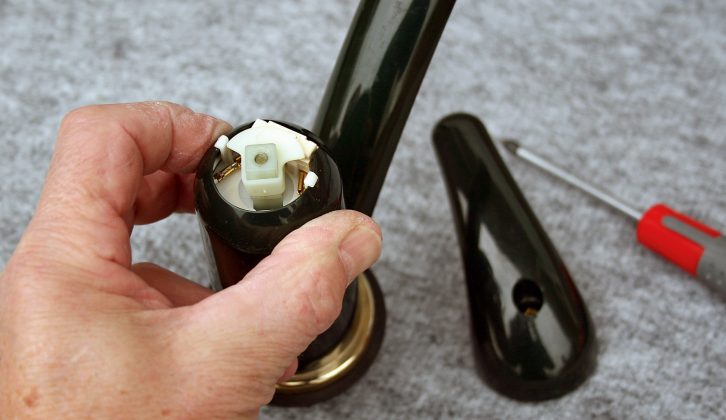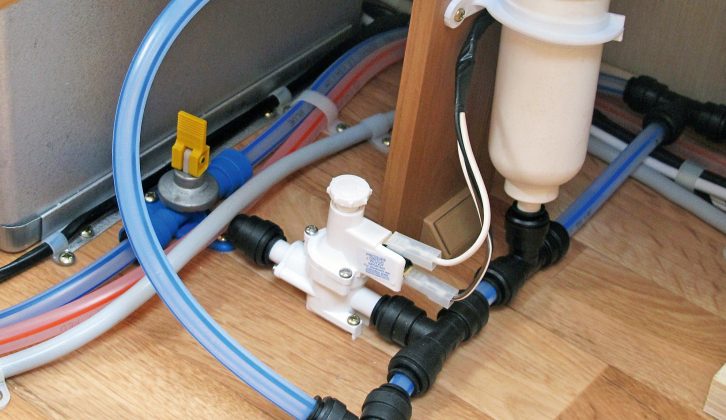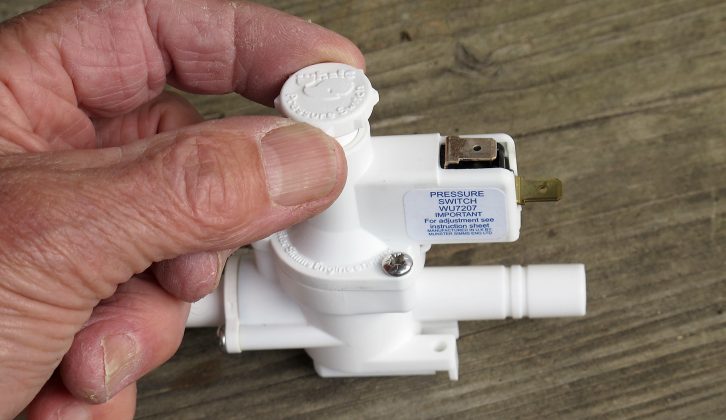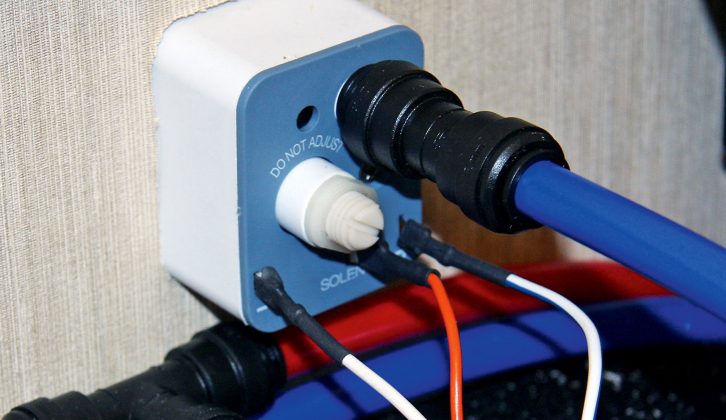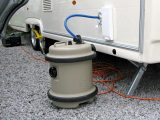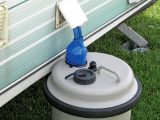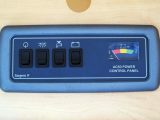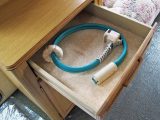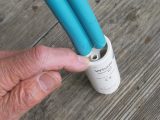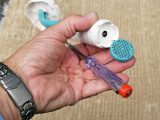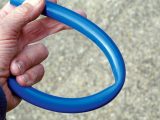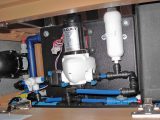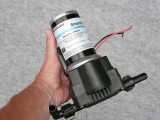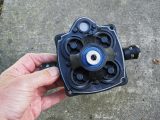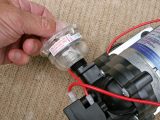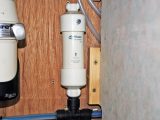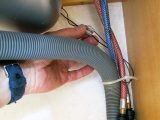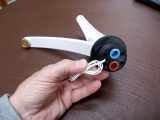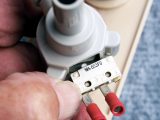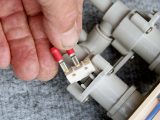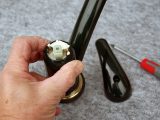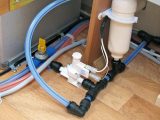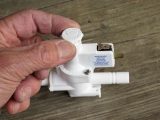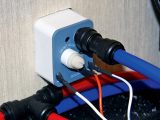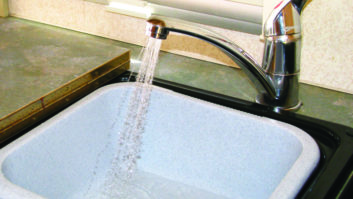Back In the 1950s, caravan water was typically collected in a large enamel jug. The system was simple and little went wrong. Then, in the 1960s, pumps arrived: some hand-operated, others by foot.
Electric pumps followed, prompting the need for switches to activate the motor whenever water was needed.
The story doesn’t end there. Most UK caravanners now use portable containers that are placed outside. Built-in water tanks are an unusual option.
Finally, full-service pitches put a ‘private’ tap by every caravan so that visitors can plumb in their tourers via a dedicated hose with a pressure-reducing component.
Regardless of the refinements, it is always annoying when something goes wrong with caravan water systems. So let’s embark on a troubleshooting mission, highlighting key issues. This begins at the source and then systematically checks the components that follow. We have a separate article giving caravan waste-water troubleshooting tips, so now let’s look at how to bring fresh water in.
Keep it clean
Regardless of whether you choose a roller barrel or a wheeled water container, remember that it must be cleaned. No-one wants to drink water with an unpleasant taste. Still, it’s surprising how few caravanners routinely rinse out their supply containers with a purpose-made sterilising treatment. Taste matters aside, if no water comes from your tap, the container may be empty. Check it.
Tip: Sometimes water is left but its level has fallen below the inlet of the hose or pump.
Shrouded in safety
Once, when our empty water container rattled, I didn’t tell the family that I checked and found something nasty inside: a big fat slug. It had got in through the top, which is why a hose shroud must be fitted. If your system lacks one, some ‘bag-making’ suppliers sell a fabric version with draw strings. (No one suffered any adverse effects and our four small infants are now in their 40s.)
Tip: Leg-lifting dogs on your site are another good reason to cover your water container.
Power to the pump
Assuming your caravan has a charged battery and all the appropriate fuses are intact, the power to run a water pump’s motor is usually activated at the 12V control panel. In my caravan the entire 12V supply is controlled by one switch and there’s a further switch with a tap pictogram. Simple! I was fooled recently by a new touch-screen panel whose pictogram looked nothing like a tap, a pump or a drop of water – and its owner’s manual was missing.
Tip: Check fuses serving the water system. An electrician would also want to confirm with a meter that 12V supply is reaching the pump.
Under-water wonder
Many of today’s UK caravans are served by a submersible pump that you lower into the supply vessel. These have an impeller, which is like a paddle wheel and its function is to push water along the inlet pipe. This type of pump only delivers water when it has been ‘primed’ full of water. If they fail, repairs are seldom possible. Since replacements may not be available abroad, always carry a spare on tour.
Tip: If a pump fails to work, try your spare before checking the fuses.
Air-raising experience
Preliminary priming occurs when this type of pump is immersed in water but air bubbles sometimes get trapped inside its casing. You’ll hear the motor whirring but no water arrives at the taps. To solve this, disconnect the pump from the van’s inlet socket, leave the pump under the water surface and swing it about so it hits the side of the container. This helps release air bubbles; more recent models have an air release outlet moulded in the top of the casing.
Tip: Some older pumps have no air-escape outlet.
Debris blows in
Another common complaint is that very little water is coming out, despite the fact that the pump is being activated when you open a tap or use the shower. That may happen if the site has recently been mowed and grass cuttings have blown into your water container. Briefly look at the pump impeller when it’s running to confirm that it is spinning at a consistent fast speed. Grass cuttings, hair or other debris caught around the spindle is likely to cause sluggish rotation.
Tip: When you check for debris, glance at the pump impeller while it’s running, but don’t let it run in a dry state for long.
Bad bends block flow
Water starvation is also caused by a restriction in a supply pipe. Usually it occurs in flexible hose, which may develop kinks, especially at a sharp bend. Kinks typically develop at a later stage in a caravan’s life, and often occur where a section of hose presses against a sharp edge on adjacent fittings. If your caravan has push-fit, semi-rigid plastic pipes, this fault is unlikely.
Tip: As a temporary cure, tighten a hose clip around a kink to press it back to normal shape.
The wrong note
More expensive caravans often have a diaphragm pump fitted indoors as an alternative to the less costly submersible types. A FloJet diaphragm pump, fitted in a 2011 Bessacarr, for example, is mounted vertically alongside an on-board water tank. These pumps are powerful, but if the mounting feet are screwed down too tightly, the base acts as does the sound board of a guitar, by amplifying motor noise – in this case, to unpleasant levels.
Tip: Loosening the screws to reduce compression of the rubber feet often helps lower the resonating sound.
Strong current needed
Diaphragm pumps have strong motors that need a 12V supply cable of a sturdier gauge than that required by submersible pumps. As a result, the open flow rate on a Whale Smartflo is an impressive 8 litres per minute and this product achieves a maximum lift of 3m (10ft). However, some diaphragm pumps have an in-line fuse holder adjacent to the unit; if the motor fails, you’ll need to check the fuse here, too.
Tip: Flexible supply cable should be 2.5 sq mm in cross-sectional area (21.5 A). It typically has 36 strands.
Don’t replace — repair
Unlike submersible models, diaphragm pumps can be repaired or completely overhauled. New ‘o’ rings, for example, may be needed, a job best left to specialists. Some pumps are easy to take apart but difficult to reassemble. The tiny pistons are moved up and down by a ‘wobble plate’ and, because grit can seriously damage the chambers, Whale supplies complete replacement heads as a pre-assembled unit.
Tip: If a diaphragm pump’s distributor or maker doesn’t do repairs, experienced caravan workshop staff can often effect a repair.
No strain with strainer
To avoid damage, most models have an interceptor or strainer fitted to the intake side of a diaphragm pump. A Shurflo pump has a clear casing so you can see whether any grit has been intercepted. Some are made in solid plastic but either way, inspecting and cleaning the filter is an important part of routine pump maintenance. Practical owners can undertake this – if the pump is easy to reach.
Tip: Undoing a grit filter casing to retrieve and clean the mesh inside often needs strong fingers.
Steady as she flows
Depending on your battery’s charge and related factors, some motors in diaphragm pumps operate with an irregular pulsing action, which affects the smoothness of the water flow.
It is usually resolved by fitting a surge damper. It may look like a cartridge taste filter, but it is completely different. Some caravans have a Whale surge damper, but other makes are available.
Tip: Surge dampers are usually fitted vertically, with the connection at the bottom.
Two types of switches
I stated earlier that a water pump’s motor is activated by some kind of switch. If your pump fails to run and you’ve checked the master switch and relevant fuses, you’ll need to inspect the pump’s dedicated switch next. Two types are fitted in caravans: one that forms part of the taps and a device that responds to a drop in pressure in the supply pipes. Cables emerging from under the taps are a sign of the first type.
Tip: Replacing a switch underneath a tap is hard if you are not a contortionist, are taller than a hobbit and can’t see well in the dark.
Choice of switches
Some replacement taps – like my lever-operated mixer tap from Whale – are supplied with pre-connected cables that are ready to couple-up with a caravan’s wiring. However, you are not obliged to use these because this type of tap can also be operated in conjunction with a pressure switch that has been installed in the supply pipes. Alternatively, a pressure-sensitive switch is often installed within the casing of a diaphragm pump.
Tip: Both types of pump switch have their strengths and weaknesses.
Microswitch on tap
The type that’s fitted as part of a tap is very small and it is appropriately called a microswitch. With one type, when the tiny white ‘pip’ on the upper side is depressed, the device is switched on. This enables the 12V power to flow up one of the cables and back down the other on the way to the pump. Of course, the user doesn’t have to press on this pip; that’s done by a plastic plate that rotates when you turn the handwheel on this type of tap.
Tip: Normally a microswitch is accessed from under the sink or handbasin.
What to watch out for
With my Whale tap, the beige-brown controls will be visible on the work surface, while all the grey parts will be below it. Take spare microswitches on holiday in case of trouble caused by damp getting into the casings. If your pump keeps running and won’t turn off, it may be due to a faulty switch. There are two switches on my hot/cold mixer tap. Each is mounted on two plastic pillars and held in place with a collar.
Tip: Even if you wouldn’t fit your own switch, carry some spares, especially if you’re touring abroad.
Easy to access switch
Popular lever mixer taps, like the Whale Elite model, don’t involve under-sink gymnastics because switch replacements are done from above. You don’t have to remove the tap but you have to withdraw the red/blue indicator button to reveal the lever’s retaining screw underneath. There’s only one microswitch in the Elite tap and the curving plastic plate that fits on the square shaft presses on the switch ‘pip’ underneath.
Tip: Detach the lever with care; if components jump out, it’s hard to work out where they fit when you later reassemble the tap.
Swapping the switch
Having removed the curved plastic activation plate, you then gently prise the microswitch upwards and away from its seating. The pair of cables attached to its spade terminals will still be in place and are folded underneath. It’s then a matter of replacing the faulty switch with a new one – which is easier for people with micro-sized fingers. Other makes of lever switch can be harder to dismantle, while ‘throwaway’ taps are totally sealed.
Tip: An electrician might temporarily link the two cables – which is what the switch does – just to confirm the pump motor responds.
Detecting a change
In one caravan no cables came down from any of the taps, so the pump was obviously activated by a pressure-sensitive switch instead. These come in various types and when there’s a pressure drop in the pipes – such as when a tap is opened – the device detects this and power then flows through to the pump. A Whale pressure switch is in the push-fit semi-rigid pipe near a surge damper, which is fitted in a 2013 Lunar Clubman SI.
Tip: Since a pressure drop from a poor pipe coupling can cause a pump to ‘blip’ briefly, many owners switch off the pump at night.
Battery has an impact
Unfortunately, pressure switches react differently when the leisure battery’s state of charge is altered. A surge or a fall in a battery’s voltage level can cause irregular pump action. That’s why Whale’s in-line device has a ‘fine adjustment’ control wheel on top. Some diaphragm pumps that incorporate a pressure switch also include a sensitivity adjustment control, which is turned with a screwdriver.
Tip: Adjustment screws on some brands may be hidden under sealant to stop owners from altering something they don’t understand.
Locations vary
The positioning of pressure switches varies a lot and the device may be fitted in a submersible pump’s plug-in socket mounted on the side of a caravan. In one such caravan there was a conspicuous adjustment point on the housing inside, albeit with a printed warning not to alter the setting yourself. That’s partly why Whale has introduced an automatic pump control unit for all Watermaster sockets fitted with a built-in pressure switch.
Tip: For more in-depth information, more than 70 illustrations, plus detailed advice on water systems are given in The Caravan Manual, Fourth Edition, Haynes Publishing.
Routine servicing is a ‘must’
Today’s caravans boast a wide variety of fresh-water system components and are better equipped than ever before. However, routine servicing is essential to ensure that yours works as it should.
Caravanning was simpler when water was collected in a tall jug, but I’m glad that we’ve moved on since then.
Caravanning was simpler when water was collected in a tall jug, but I’m glad that we’ve moved on since then
